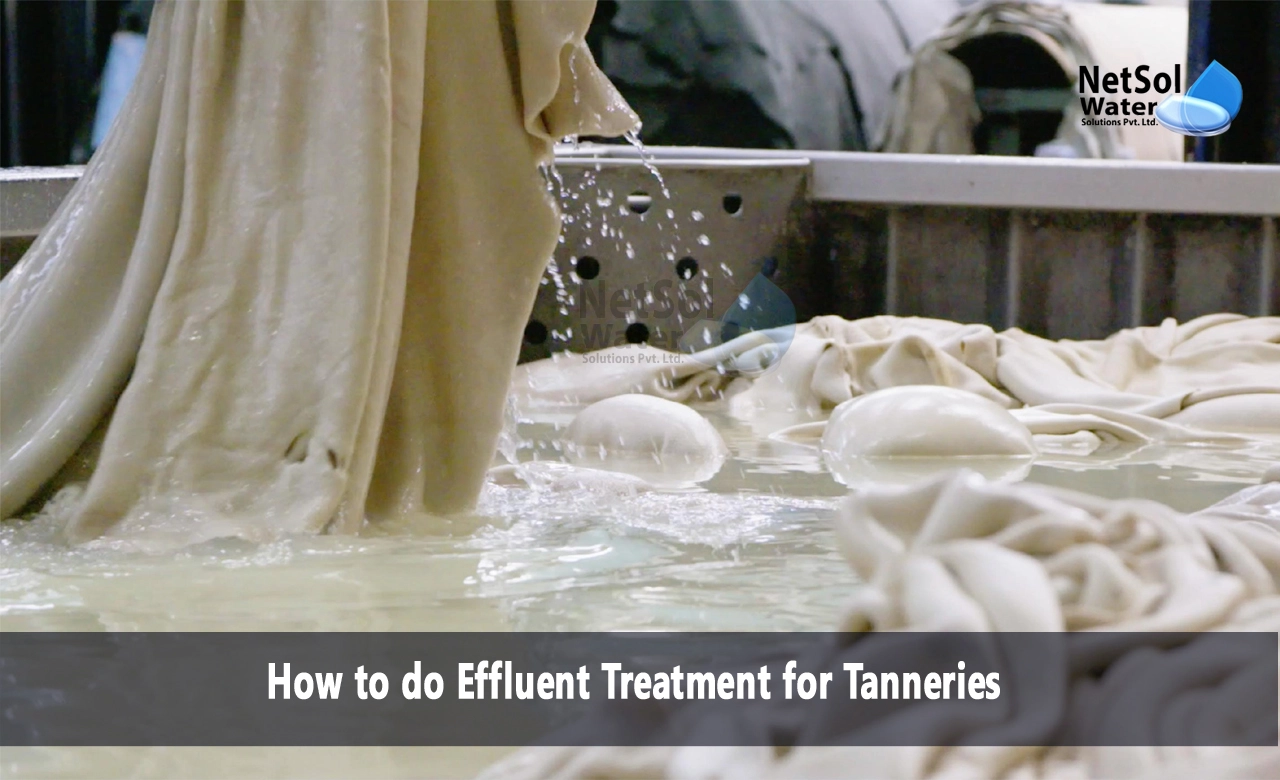How to do Effluent Treatment for Tanneries?
The process of tanning involves the use of various chemicals, such as chromium, to convert raw animal hides into leather. This process generates wastewater, known as effluent, which poses a significant environmental risk if released untreated into the environment. Untreated effluent from tanneries can contain toxic chemicals and high levels of organic matter, which can have severe impacts on the environment, public health, and animals. Therefore, it is necessary to treat effluent before release. We will explore effluent treatment for tanneries, its necessity, and the stages involved in its treatment.
Why is it necessary to treat effluent released by tanneries?
Effluent released by tanneries is characterized by high levels of organic matter and pollutants such as chromium, sulfides, and chlorides. These chemicals can degrade water quality and threaten aquatic ecosystems, wildlife, and human health. For example, chromium can cause severe skin irritation, respiratory problems, and cancer if it enters the human body. Sulfides, on the other hand, can affect aquatic organisms, leading to the death of fish and other aquatic life. Chlorides can also be toxic to plants and animals, and when present in high concentrations, can have adverse environmental effects. Therefore, the treatment of effluent generated by tanning industries is crucial for the environment and public health.
Stages involved in effluent treatment for tanneries
Effluent treatment for tanneries typically involves several stages of treatment, each of which aims to remove specific chemicals or organic matter.
1. Preliminary Treatment:
The preliminary treatment is the first stage of effluent treatment for tanneries. It involves the physical removal of large solid particles from the wastewater using processes such as screens, grit chambers, or sedimentation tanks. This stage also removes undesirable substances like fats, oils, and grease.
2. Primary Treatment:
After preliminary treatment, effluent undergoes primary treatment wherein the initial chemical pollutants are physically separated from the water through sedimentation and coagulation. Coagulants such as alum or ferric chloride are added to the water to form flocs, which then can be easily separated. This stage helps remove large quantities of suspended solids, organic matter, and heavy metals from the effluent.
3. Secondary Treatment:
The secondary treatment stage typically utilizes biological processes to break down the organic matter present in effluent. It can include conventional activated sludge or extended aeration, which employs microorganisms to degrade pollutants further. Advanced treatment technologies such as sequencing batch reactor (SBR), membrane bioreactors (MBRs), or rotating biological contactors (RBCs) are also used for efficient treatment. This stage can be designed to target specific pollutants or contaminants in the effluent effectively.
4. Tertiary Treatment:
The tertiary treatment stage is mainly focused on removing any remaining contaminants or pollutants that could not be eliminated through primary and secondary treatment. It involves processes such as adsorption, chemical precipitation, or membrane filtration, which target specific pollutants such as chromium and sulfides, resulting in a higher quality effluent ready for discharge.
Conclusion
Effluent treatment for tanneries is crucial for mitigating the environmental risks associated with the wastewater generated during the tanning process. The treatment process involves several stages, including preliminary, primary, secondary, and tertiary treatment, each targeting specific contaminants and pollutants. The primary and secondary stages mainly focus on removing organic matter such as animal hair, fat, and flesh, which reduces the biological oxygen demand (BOD) and chemical oxygen demand (COD) of the effluent. Tertiary treatment further eliminates any remaining pollutants, including heavy metals, chlorides, and chromium. By treating the effluent from tanneries, we can protect the environment, conserve natural resources, and minimize health risks to humans and animals. With effective effluent treatment, tanneries can continue to produce the materials needed for leather goods in an environmentally responsible way.
Netsol Water is Greater Noida-based leading water & wastewater treatment plant manufacturer. We are industry's most demanding company based on client review and work quality. We are known as best commercial RO plant manufacturers, industrial RO plant manufacturer, sewage treatment plant manufacturer, Water Softener Plant Manufacturers and effluent treatment plant manufacturers. Apart from this 24x7 customer support is our USP. Call on +91-9650608473, or write us at enquiry@netsolwater.com for any support, inquiry or product-purchase related query.



